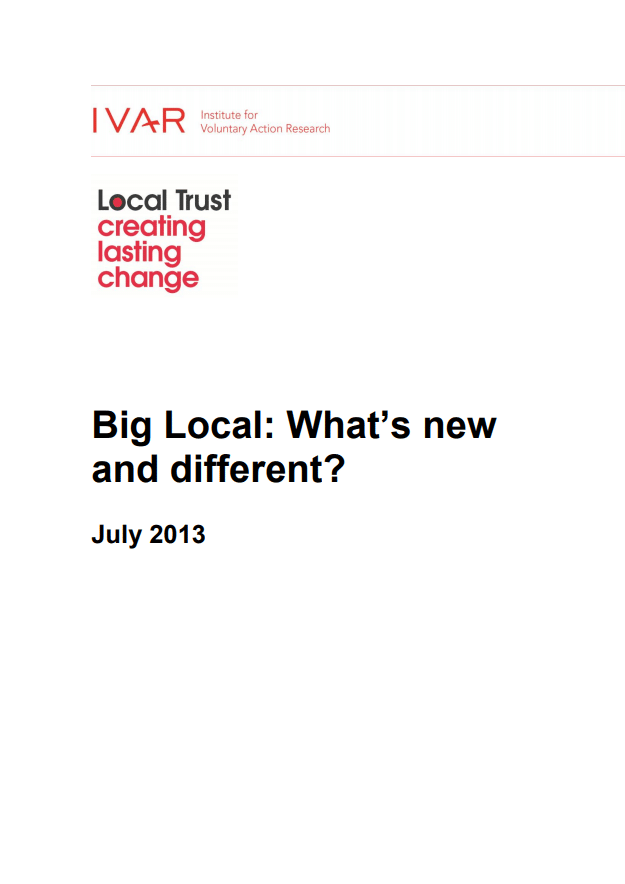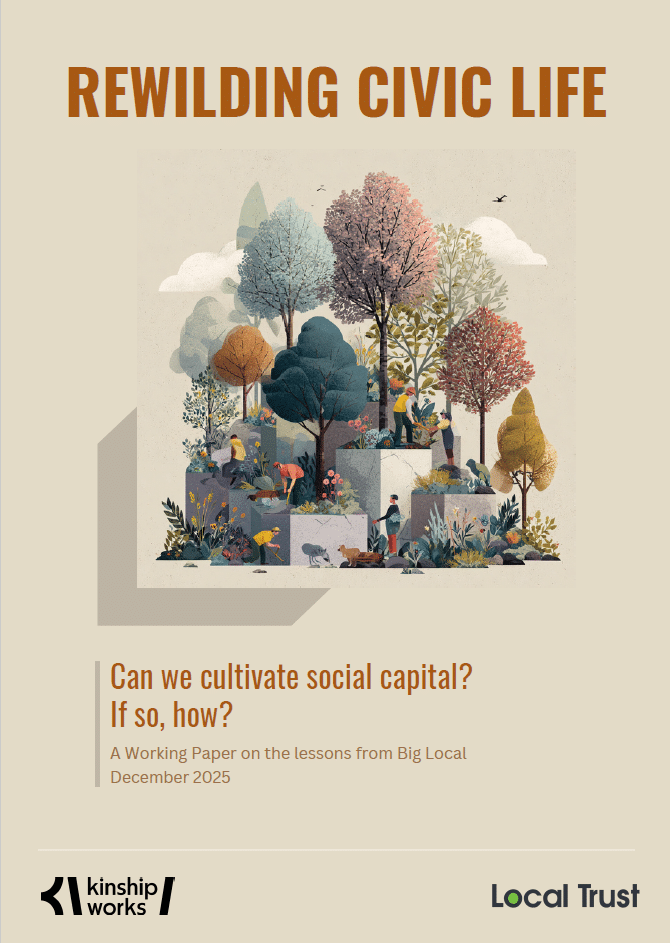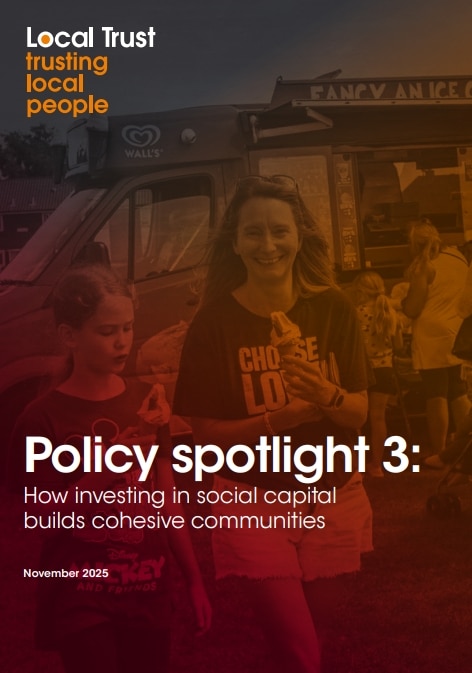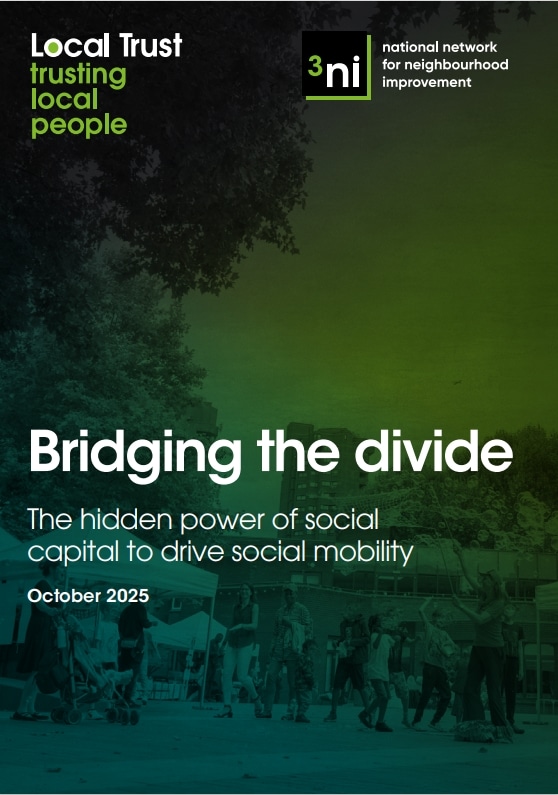What’s new and different?
This paper outlines some important distinctions about the unique position of Local Trust, our values and our approach

Since Big Local was announced in 2010, and the subsequent establishment of Local Trust in 2011, we have been interested in developing some work that highlights what is ‘new’ and ‘different’ about Big Local. This paper sets out some of the deliberate choices that the Community Development Foundation (CDF) led consortium and then Local Trust and its partners made during the set-up phase that builds on the learning and experiences of area-based, community development models that preceded Big Local. It also outlines other approaches that Big Local draws on to facilitate and support resident-led change in 150 areas across England.
Local Trust is pleased that this paper describes how Big Local has been developed using lessons from the past. This includes our deliberate efforts to make this a long-term investment so that residents in Big Local areas are able to build their skills and confidence at their own pace. Additionally, our aim to give greater control and power to residents has been recognised through highlighting the light-touch face to face support we have in place and the importance of peer-to-peer learning for people in Big Local areas to learn from each other.
This report also outlines some important distinctions about the unique position of Local Trust (as an independent charitable trust, not a government agency), our values and our approach. Our willingness to take and manage risks aims to encourage those in Big Local areas to deliver more innovative activities, while supporting people to build on their assets, expand their potential and embrace opportunities. This may include social investment and community finance activities which create new, albeit riskier opportunities than those offered in previous area-based regeneration and community development programmes.
The challenge ahead is responding to and managing the issues and risks involved in delivering a programme like Big Local. Participation, leadership and volunteering are key parts of Big Local, and Local Trust is considering how we support resident enthusiasm and involvement over time. Similarly, the capacity for Local Trust to use the programme’s culture of learning to adapt and accommodate change over 15 years will be a significant test.
Local Trust will use learning from Big Local to develop strategic and incremental improvements to Big Local so Big Local areas can achieve change on their own terms. Our theory of change can be found here, and this paper helps put it in context. Our work with our two research partners, IVAR and CDF and our external relationship with the School for Public Health Research will support us by conducting close investigations on the set-up of Big Local and the appropriateness of the support in place.
Finally, we are looking forward to the discussion and debates this paper will inspire and more importantly, how this dialogue will lead to improvements to our activities and approach so that we are able to better support residents’ and their interests in all Big Local areas.
Debbie Ladds, chief executive



